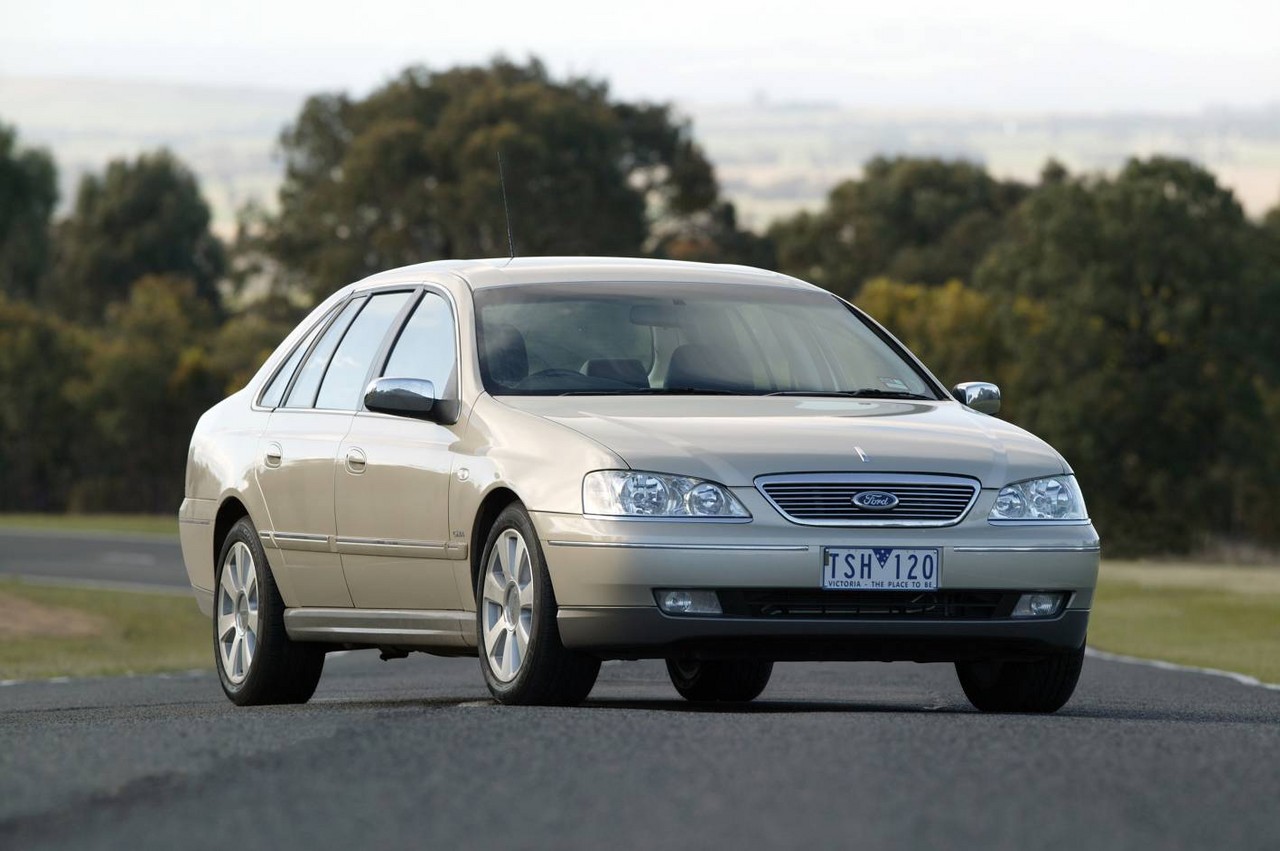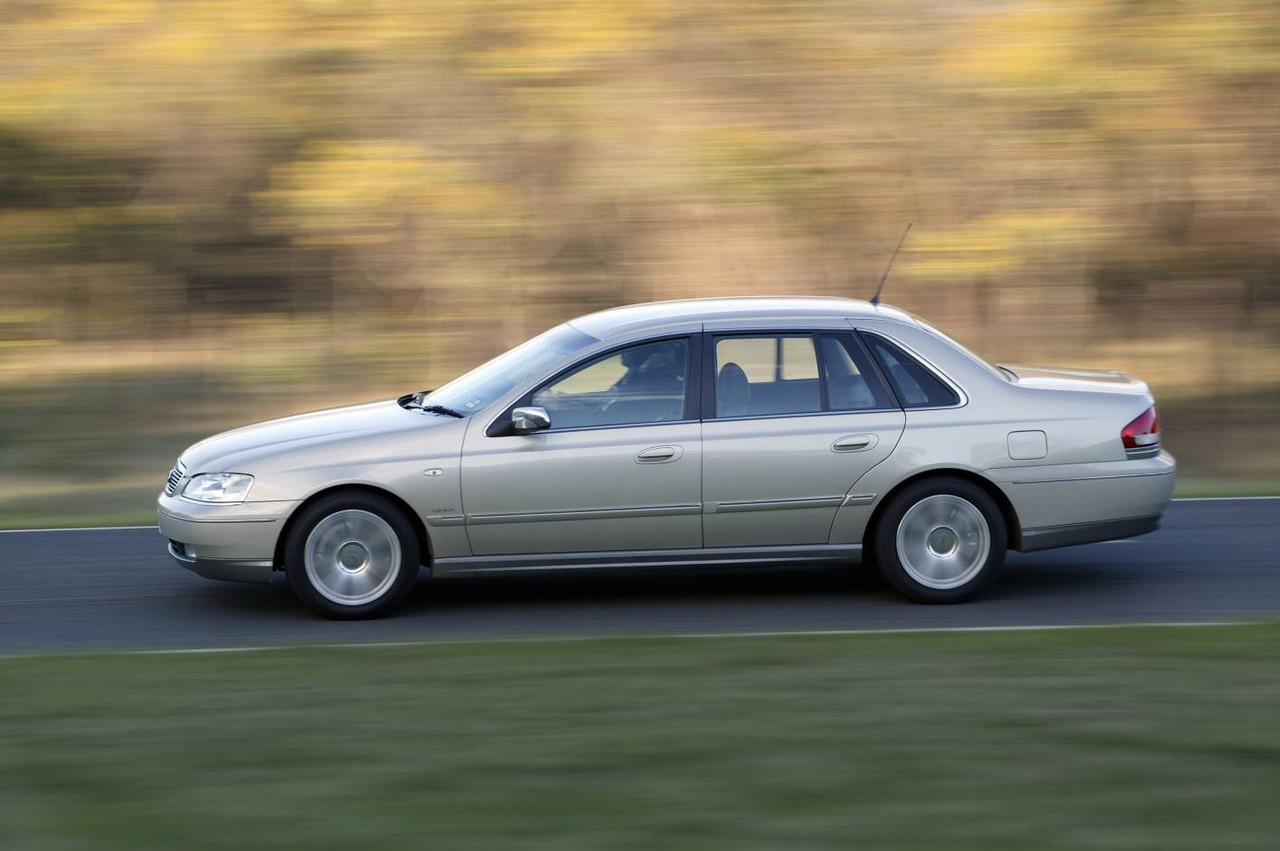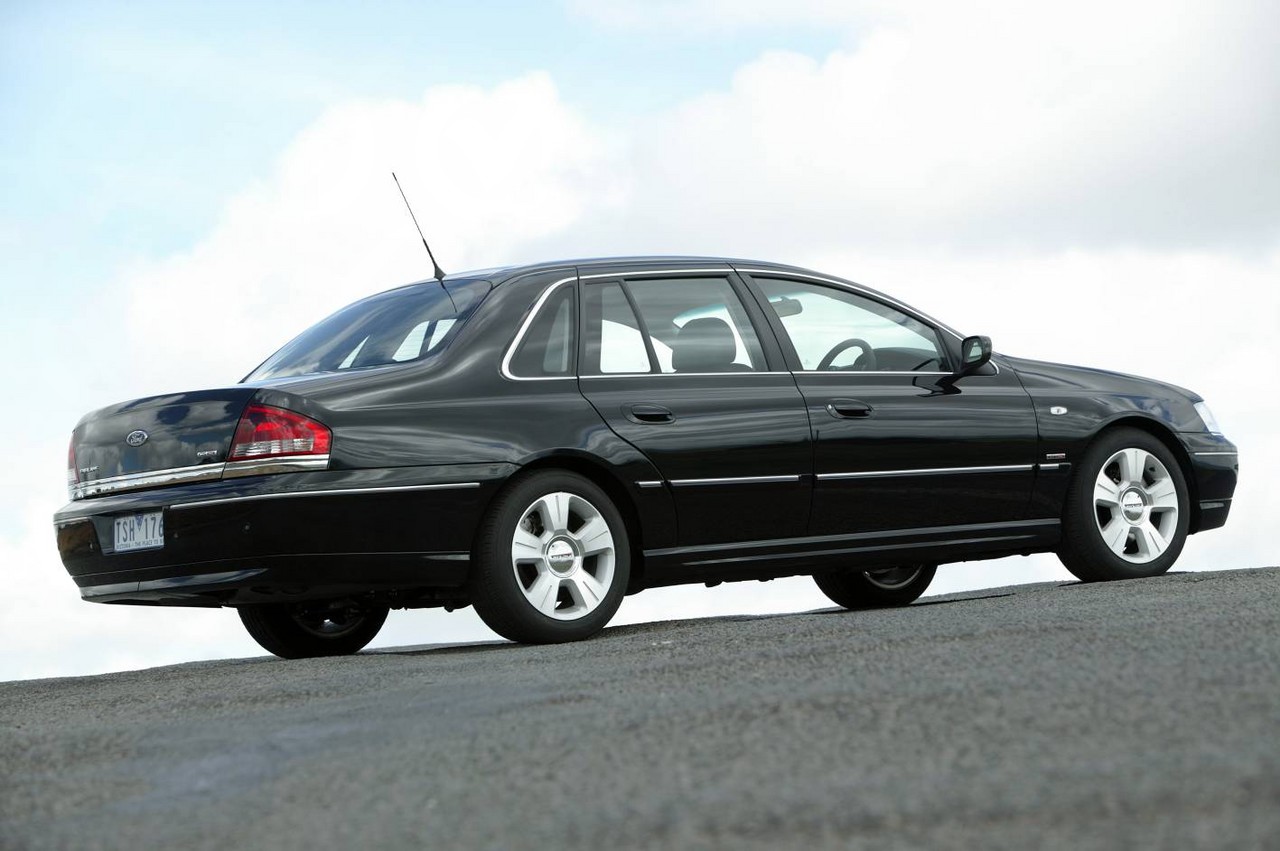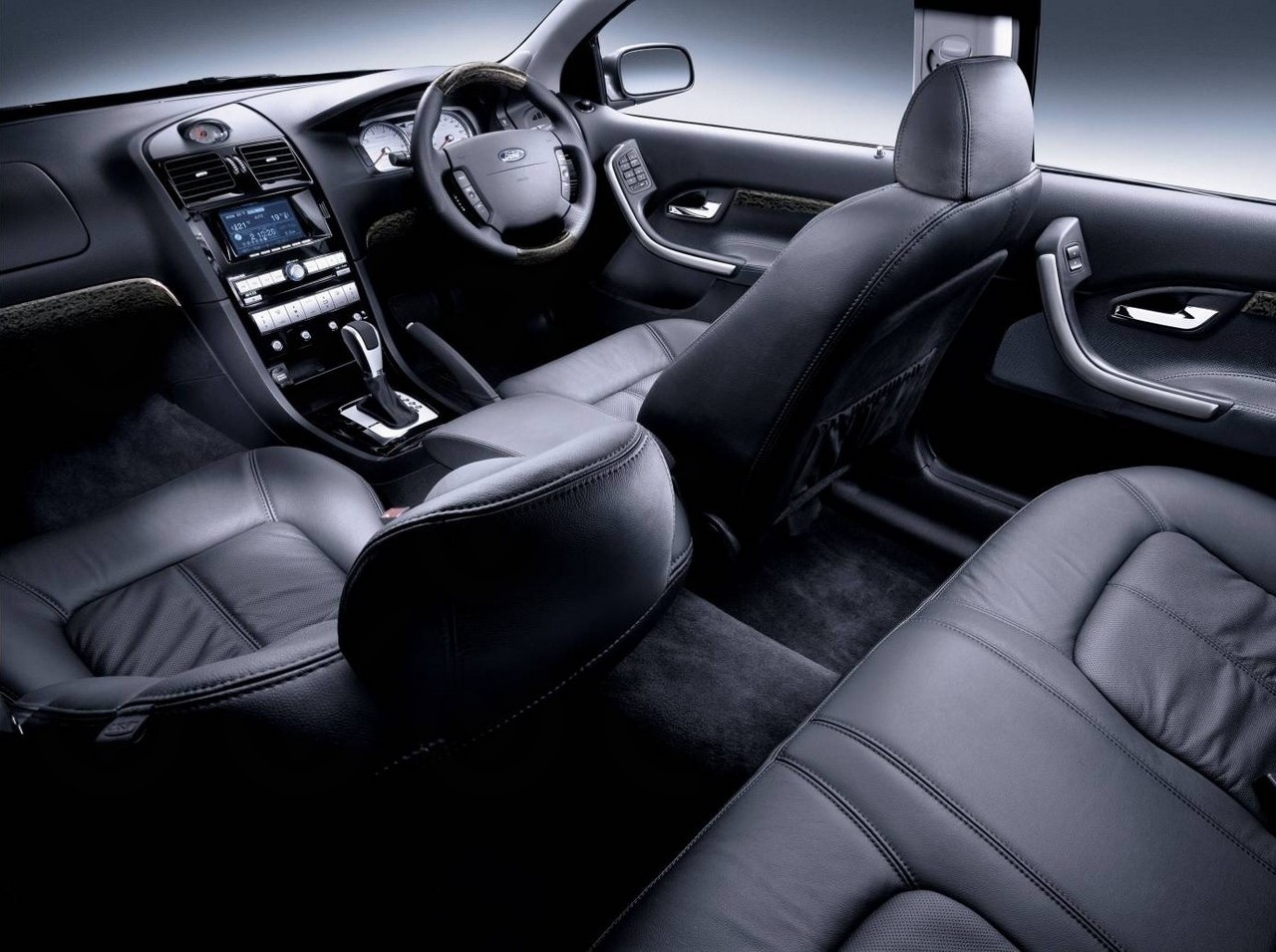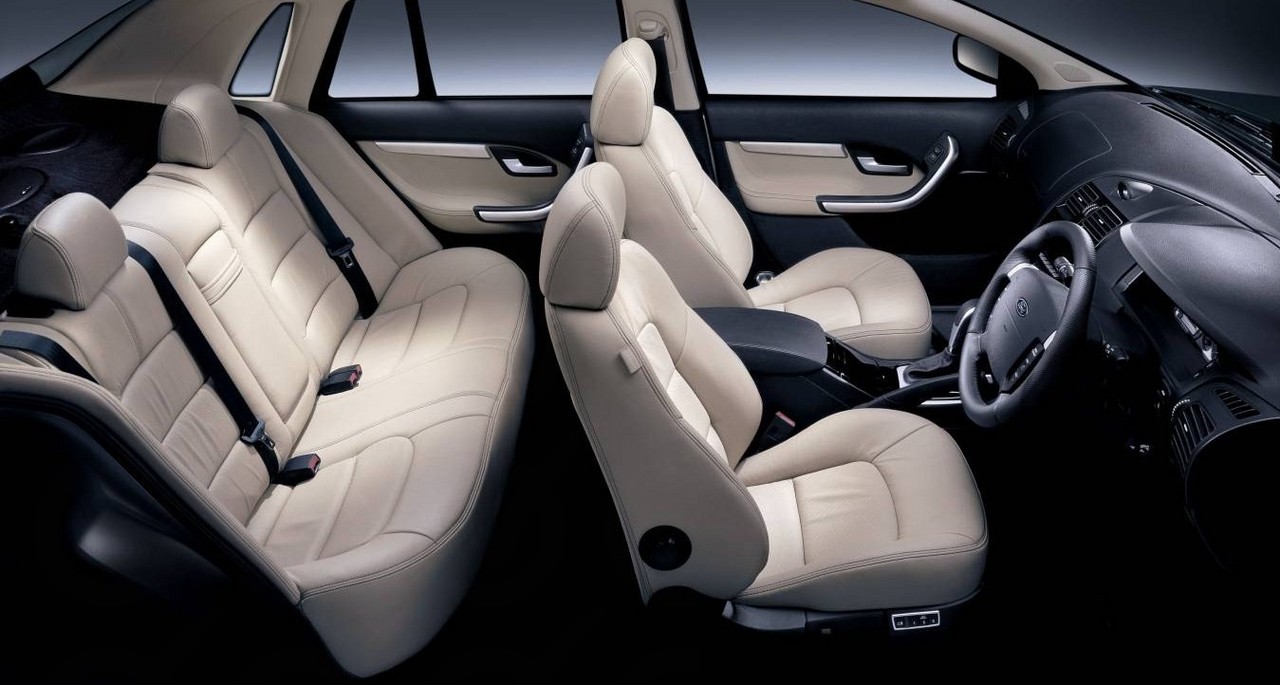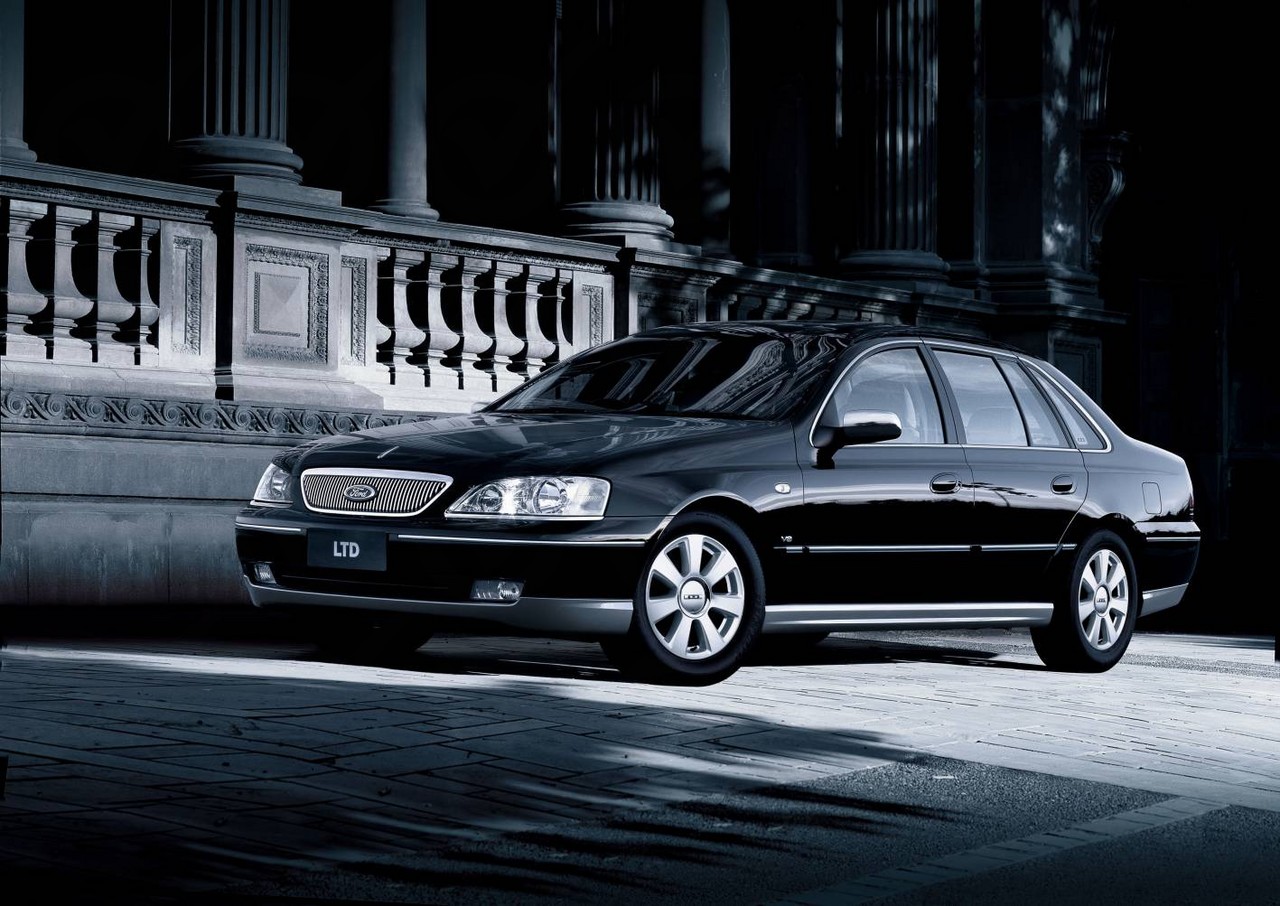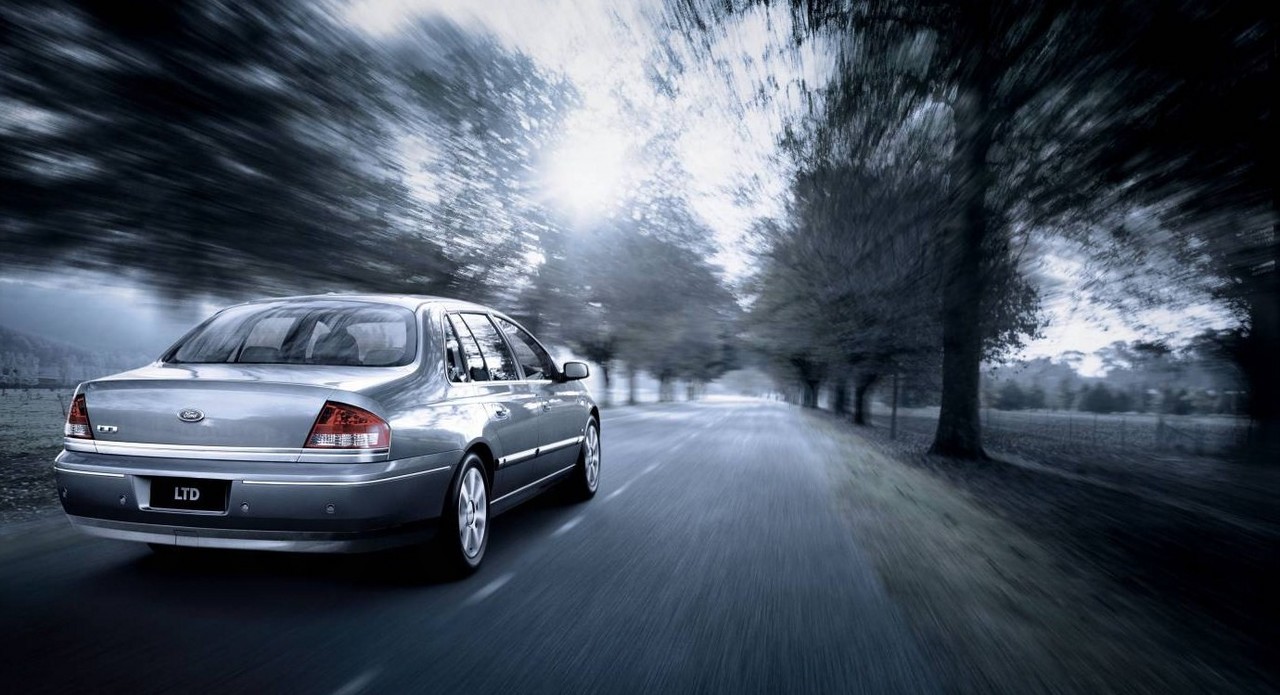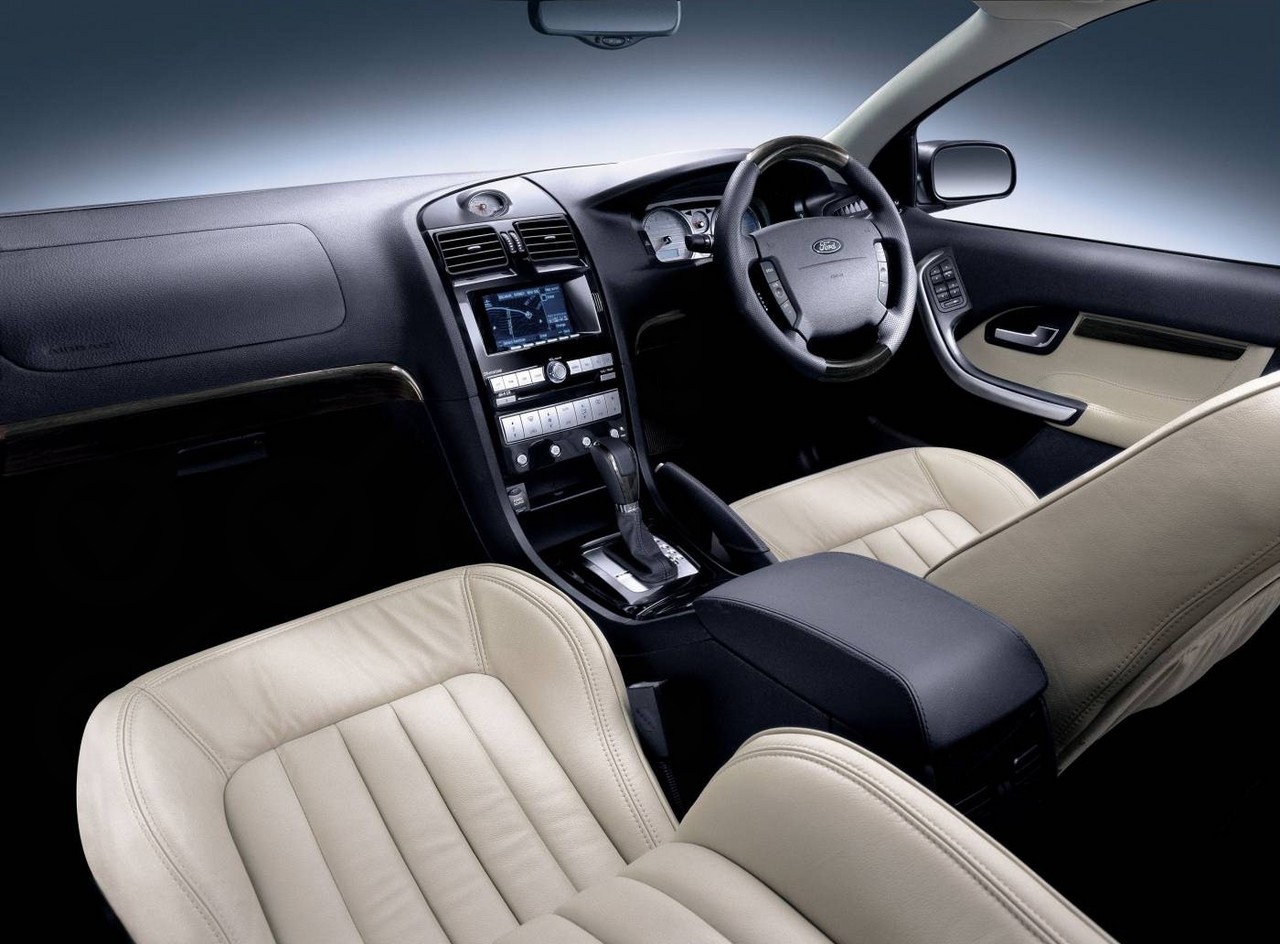
- Responsive and refined 4.0-litre six-cylinder engine
- Accomplished ride/handling balance
- Quiet and spacious interior
- Steering provides good feedback
- Refined six-speed ZF automatic transmission
- Cast-iron 4.0-litre engines are heavy and not particularly fuel-efficient
- Variable build quality
- Rear seat ambience hurt by position of rear door frame relative to seat
- Coolant lines for automatic transmission cooler susceptible to failure
- ‘Control Blade’ semi-trailing arm rear suspension inferior to VE Commodore-based four-link IRS
Review: Ford BF Fairlane and LTD (2005-07)
Overview
Released in October 2005, the Ford BF Fairlane and LTD were long wheelbase sedans. Manufactured in Campbellfield, Victoria, the rear-wheel drive BF Fairlane was available with 4.0-litre inline six cylinder or 5.4-litre V8 petrol engines; the LTD, however, was solely available with the 5.4-litre V8 engine. The full range is given in the table below.
Engines: Barra 190, E-Gas LPG and Barra 230 V8
Of the engines,
- The 4.0-litre Barra 190 inline six-cylinder petrol engine had a cast iron block, a cast aluminium cylinder head, double overhead camshafts (DOHC, simplex chain-driven), dual independent variable camshaft timing, four valves per cylinder, Duratec-style finger followers, a dual resonance inlet manifold, coil-on-plug ignition, electronic throttle control, exhaust gas recirculation and a compression ratio of 10.3:1. Compared to its Barra 182 predecessor, changes for the Barra 190 engine included independent variable camshaft timing (i.e. each phaser could rotate each camshaft independently), a revised camshaft profile, a second knock sensor so that ignition timing could be optimised for each cylinder, revised piston crown profiles for a higher increased compression ratio, lower viscosity engine oil (5W30 GF3, previously 10W30 GF2), a lighter driveplate assembly, a new air intake and a revised exhaust system (with a new front resonator and retuned centre and rear mufflers);
- Compared to the Barra 190 engine , the 4.0-litre Barra E-Gas dedicated LPG engine had a Vialle closed-loop single-point carburetion system, a compression ratio of 10.3:1 and hardened valves and valve seats. For the BF range, the E-Gas engine had a lower compression ratio since it shared its pistons with the Barra 190 engine, had a revised venturi (for better air/fuel mixing), throttle body and inlet pipe, and satisfied Euro III emissions standards. For sedans, the tank fitted under the rear of the vehicle and had a capacity of 93 litres (116 litres for wagons);
- The 5.4-litre Barra 230 V8 engine had a cast iron block, a cast aluminium cylinder head, sintered connecting rods, a single overhead camshaft (SOHC), variable camshaft timing (over 60 degrees relative to the crankshaft), three valves per cylinder (two intake, one exhaust), roller finger followers, coil on plug ignition and a compression ratio of 9.7:1. Changes for the BF range included the introduction of dual knock sensors for more aggressive ignition calibration, ECU modifications, a larger diameter rear muffler (previously shared with the same Barra 182) and Euro III emissions compliance.
For the BF range, ‘transient’ rpm limits were introduced for the six cylinder engines which momentarily allowed engine speed to exceed the prescribed rev limit during upshifting – this enabled wide open throttle upshifting to occur at an engine speed closer to the rev limiter than would otherwise be possible.
Transmissions
Fitted as standard and first introduced in the BMW E65 and E66 7-Series , the six-speed ZF 6HP26 automatic transmission was available in two versions: a standard version with a torque capacity of 450 Nm and a high-performance 600 Nm version (for use with the Barra 230, Barra 245T and Boss 260 engines) which had upgraded clutches with extra plates in the clutch packs. For its use in the BF Fairmont, hardware changes for the ZF 6HP26 transmission included a unique transmission main case, torque converter, output/driveshaft flange and a new transmission cross member attachment (shared with the four-speed automatic). The ZF transmission featured adaptive ‘Driver Recognition’ behaviour, including brake support downshifts, gear holding when cornering, gear holding for uphill and downhill driving and gear holding for fast-off throttle driving situations.
For all BF automatic transmissions, a new remote transmission oil cooler (RTOC) – with a three-way coolant thermostat – was mounted to the engine block. Acting as a heat exchanger, coolant lines (or tubes) passed through the radiator to warm-up the transmission fluid on start-up and provide cooling under high load/high temperature operating conditions.
Development and dimensions
Since the BF Fairlane and LTD had the same platform as their BA predecessors, greater refinement was a significant objective in its development. To this end, the following changes were made:
- The introduction of a two-piece, lofted outer dashboard;
- The addition of bitumastic pads to the body for damping of low- and mid-frequency noises;
- The introduction of an absorptive roof-liner;
- Improved static sealing;
- Body structure improvements through the fitment of a reinforcing box section to the transmission cross member and centre bearing body reinforcement;
- New engine and transmission mounts; and,
- Redesigned exhaust hangers to isolate muffler vibration from the body.
Other developments – shared with the BF Falcon – included:
- The introduction of Bosch ABS 8.0 (previously 5.3) which included electronic brake force distribution;
- An upgraded traction control system and the introduction of electronic stability control and cornering brake control;
- A revised pedal map for the electronic throttle control; and,
- A higher-output alternator for improved fuel economy, lower rotational speeds and lower fan speeds.
Compared to the BA Fairlane and LTD , the BF Fairlane and LTD had the same dimensions: 5153 mm long, 1862 mm wide, 1493 mm tall and with 2919 mm long wheelbases. Visually, the BF Fairlane and LTD could be identified by their new tail lamps and alloy wheel designs. Inside, there was a new gearshift for the six-speed automatic transmission, soft-feel door grand handles with satin chrome inserts.
Suspension
The Ford BF Fairlane and LTD had double wishbone front suspension and independent rear suspension (IRS) which had three control arms:
- A forged upper control arm;
- A stamped front lower control arm; and,
- A stamped rear lower control arm.
Each control arm had a cross axis ball joint on the wheel assembly end and was attached to the subframe and knuckle. Furthermore, the ‘Control Blade’ was a stamped trailing arm which provided lateral support and acted as a vertical pivot point.
| Model | Variant | Engine | Trans. | Peak power | Peak torque |
|---|---|---|---|---|---|
| Fairlane | Ghia | 4.0-litre Barra 190 petrol I6 | 6sp auto | 190 kW at 5250 rpm | 383 Nm at 2500 rpm |
| Ghia, G8 |
5.4-litre Barra 230 petrol V8 | 6sp auto | 230 kW at 5350 rpm | 500 Nm at 3500 rpm | |
| LTD | N/A | 5.4-litre Barra 230 petrol V8 | 6sp auto | 230 kW at 5350 rpm | 500 Nm at 3500 rpm |
Safety equipment
Standard safety equipment for the Ford BF Fairlane and LTD included dual front airbags, front side airbags (with head protection), ABS, electronic brake force distribution, electronic stability control and cornering brake control, traction control and front seatbelts with pretensioners and load limiters.
Brakes
The standard braking package for the six-cylinder BF Fairlane consisted of 298 mm by 28 mm vented front brake discs with twin-piston callipers and 303 mm by 16 mm solid rear discs with single piston callipers. Models with V8 engines, however, had a premium braking package which consisted of 322 mm by 28 mm vented front brake discs and 328 mm by 26 mm vented rear discs.
Features: Fairlane Ghia and G8
Standard features for the Ford BF Fairlane Ghia included 17-inch seven-spoke alloy wheels, an 11 speaker 260 watt sound system with six-disc in-dash CD player, dual zone climate control air conditioning, ‘China Beige’ leather seats, an eight-way power adjustable driver’s seat with memory settings, six-way power adjustable front passenger seat, cruise control, steering wheel audio controls, automatic headlights, rear parking sensors, a leather-wrapped steering wheel and gearshift, remote central locking, 60/40 split and folding rear seat, power windows, power mirrors with memory settings, automatically dipping door mirrors when reversing, a tilt and reach adjustable steering wheel, a leather-wrapped steering wheel, ‘Ruby Mahogany’ interior highlights, a trip computer and an immobiliser.
The Fairlane G8 was distinguished by its 17-inch five-spoke alloy-wheels with its firmer suspension and lower profile (225/50) tyres, ‘Redline’ leather seats with warm charcoal perforated leather inserts, perforated leather-wrapped steering wheel with brushed aluminium style inserts, perforated leather-wrapped gearshift with satin inserts and ebony headlight bezels. The G220 was fitted with seven-spoke alloy wheels and a leather-wrapped sports steering wheel.
Features: LTD
Compared to the Fairlane Ghia, the Ford BF LTD featured 17-inch seven-spoke alloy wheels, satellite navigation, ten-way power adjustable front seats with driver’s seat memory settings, bolstered rear seats, rear seat DVD player and monitor, front fog lights, a power sunroof, electrochromic (auto-dimming) rear view mirror, a Stone Maple woodgrain and leather-wrapped steering wheel, embroidered floor mats, woodgrain gear shift and ‘Rabbit Rose’ woodgrain finishes.
Related links
